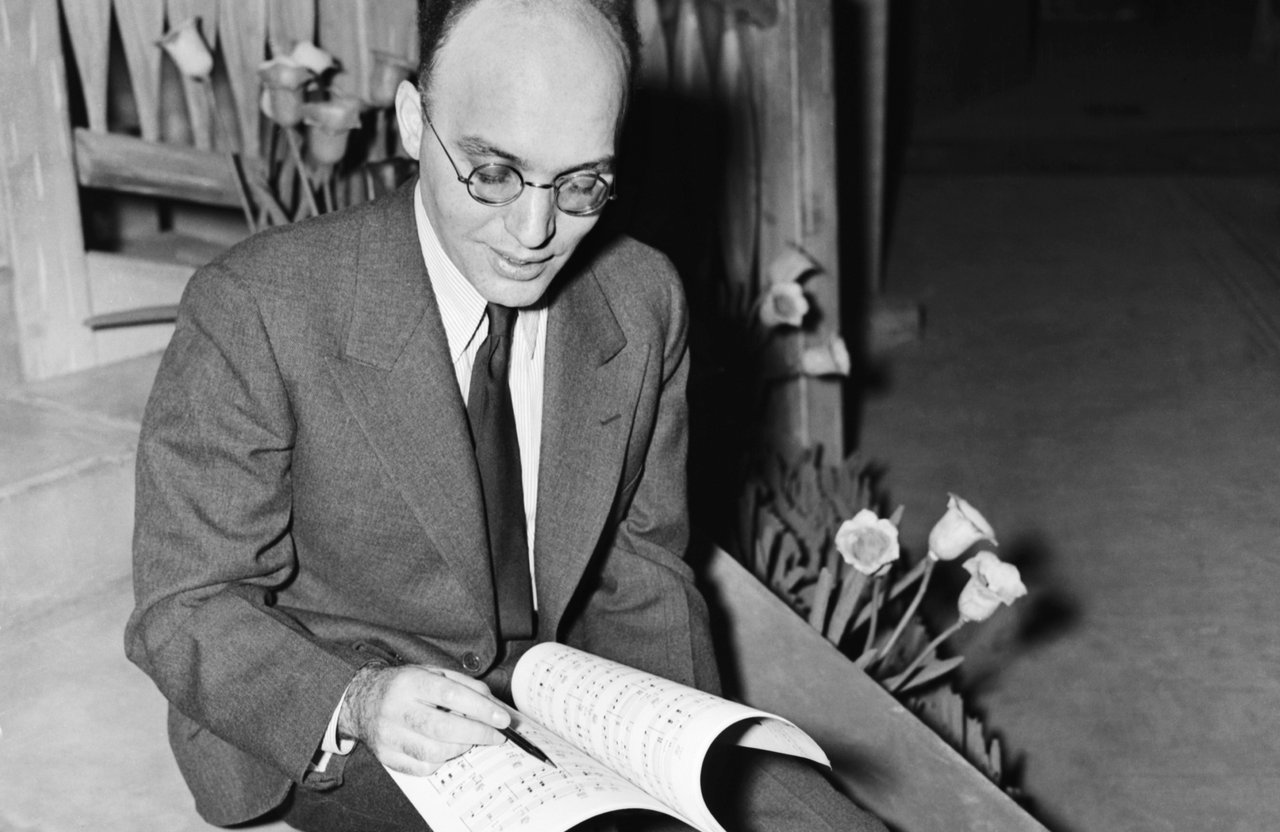16.00 Uhr
Neujahrskonzert
 Kurt Weill © Getty Images / Foto: Bettmann
Kurt Weill © Getty Images / Foto: Bettmann
In her opening season, Joana Mallwitz and the Konzerthausorchester focus on works by Kurt Weill: at the beginning the first, later the second symphony and his well-known masterpiece "The Seven Deadly Sins". Read an overview by Weill expert Elmar Juchem on what connected the composer and the capital.
Berlin? “That’s no cosy little spot; that’s quite a city!” is a laconic line of text from Kurt Weill’s “Berlin im Licht”. He composed the song in 1928 as a little homage to the city he loved so much, his home for ten years. As a casual foxtrot, the song truly represents the Berlin of the “Roaring Twenties”, and no longer has much in common with the cosy hum-ta-ta of Paul Lincke’s operetta march “Berliner Luft” (The Air in Berlin). Weill, a high school graduate, was still becoming acquainted with the old Berlin when he was accepted into Engelbert Humperdinck’s composition class at the Royal Music Institute in the spring of 1918. He experienced street fights on Schloßplatz and the collapse of the monarchy first-hand in the capital.
Following the proclamation of the German Republic, Kurt Weill threw himself into the exuberant cultural life of the city – hardly an evening went by without him visiting a concert, theatre or cinema. He joined the Berlin Novembergruppe, a group of young artists seeking new paths for the arts in the spirit of the November Revolution. When Ferruccio Busoni took over the master class for composition at the Prussian Academy of Arts in late 1920, Weill became his first student. Almost simultaneously, he began composing his first symphony, blending motifs from a likely mere outline of incidental music for Johannes R. Becher’s revolutionary drama “Workers, Peasants and Soldiers: The Awakening of a People to God”.
Image files provided by the Weill-Lenya Research Center, Kurt Weill Foundation for Music, New York
The composer quickly connected with fresh audiences through his inaugural theatrical composition; the children’s pantomime “Die Zaubernacht” (The Magic Night) ran half a dozen times at the Theater am Kurfürstendamm in late 1922. When the radio station Funk-Stunde Berlin started broadcasting in early 1924, Weill recognised the enormous potential of the new medium. For several years, he pursued a career as a journalist for a radio magazine while composing complementary pieces. While his true domain was musical theatre, he also made a significant impact in the classical concert industry. The Berlin Philharmonic performed his Divertimento, Op. 5 in 1923, a song cycle for orchestra “Stundenbuch”, Op. 13/14 in 1925 and his Concerto for Violin, Op. 12 in 1928. In 1926, Weill married the actress Lotte Lenya – a tumultuous relationship that began in 1924 and, despite several separations, endured until Weill’s death in 1950.
The 1927 performance of his one-act opera “Royal Palace” at the Berlin State Opera under Erich Kleiber was a high point for Kurt Weill. The grand tango finale of the opera, which he called a “tragic revue”, met with resistance in conservative circles due to its pop elements. Bertolt Brecht, who may have attended a performance at the behest of his mentor Herbert Ihering, must have had quite a different reaction to it. Supported by Brecht’s collaborator Elisabeth Hauptmann, the young playwright and the composer began their legendary collaboration, producing a real “Berlin sound”. “The Threepenny Opera” (1928) would run hundreds of times at the Theater am Schiffbauerdamm, and thousands of times throughout Europe until 1933.
However, Weill and Brecht incurred the wrath of their critics with the radio cantata “Berlin Requiem”, a scathing critique directed towards Prussian militarism. Local censorship prevented it being broadcasted in Berlin. The ascent of the National Socialists further compounded their challenges, even within the liberal confines of Berlin. No public opera house dared to perform “Rise and Fall of the City of Mahagonny”. Weill sought out opportunities abroad. In autumn 1932, he received a commission from Paris to compose an orchestral piece that would be his second symphony.
With a completed sketch of the first movement in his luggage, Weill fled Berlin in March 1933, never to come back. But his music returned to the city. And has stayed there.